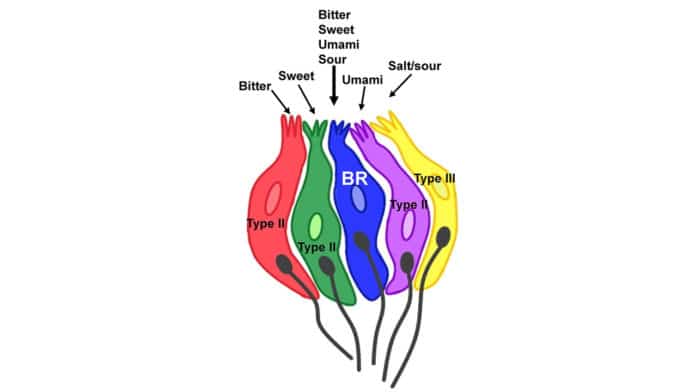Taste buds in the mouth are critical to our survival and help us decide whether a food is a good source of nutrients or a potential poison. Taste buds employ three types of taste cells:
- Type I cells act as support cells;
- Type II cells detect bitter, sweet and umami tastes; and
- Type III cells detect sour and salty flavors.
To comprehend how taste cells detect and signal different tastes, scientists from the University at Buffalo used an engineered mouse model to explore the signaling pathways that the animals use to relay the taste information to the brain.
They determined previously unknown subset of Type III cells that were “broadly responsive” and could announce sour stimuli using one signaling pathway, and sweet, bitter and umami stimuli. The discovery provides new insight into how taste information is sent to the brain for processing and suggests that taste buds are far more complex than we currently appreciate.
According to scientists, these broadly responsive cells make a significant contribution to our ability to taste.
Author Kathryn Medler said, “Taste cells can be either selective or generally responsive to stimuli similar to the cells in the brain that process taste information. Future experiments will be focused on understanding how broadly responsive taste cells contribute to taste coding.”
Journal Reference:
- Dutta Banik D, Benfey ED, Martin LE, Kay KE, Loney GC, Nelson AR, et al. (2020) A subset of broadly responsive Type III taste cells contribute to the detection of bitter, sweet and umami stimuli. PLoS Genet 16(8): e1008925. DOI: 10.1371/journal.pgen.1008925
